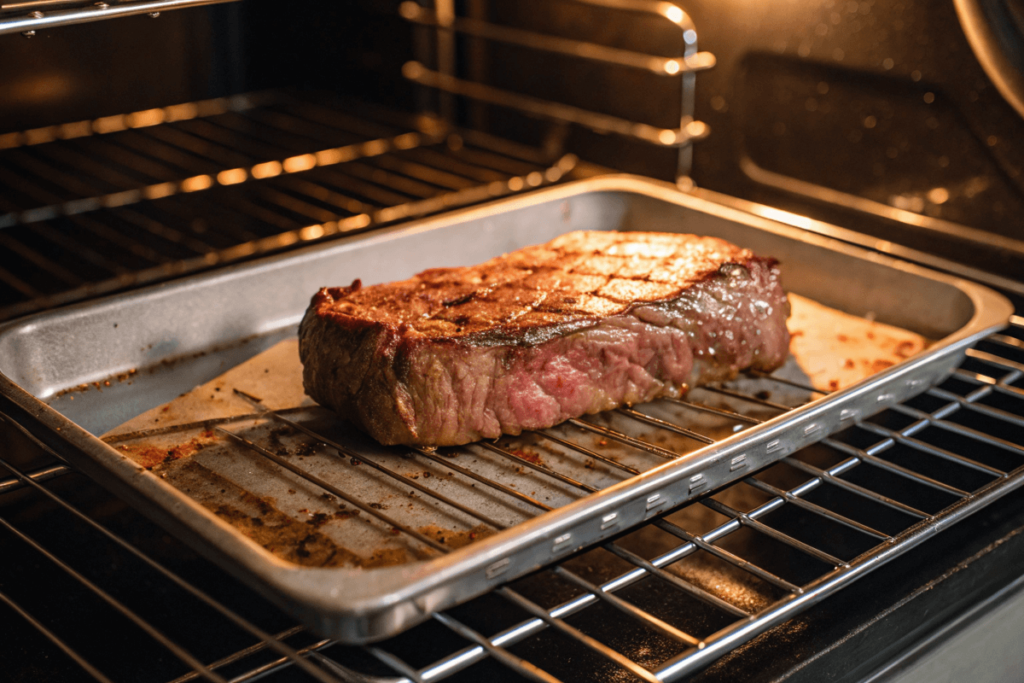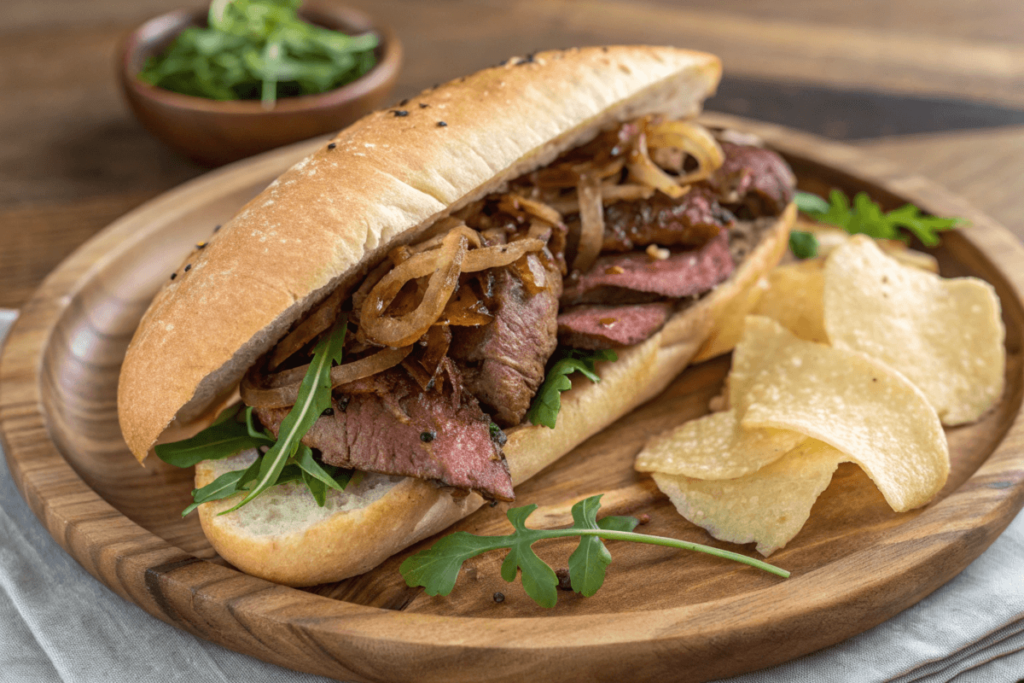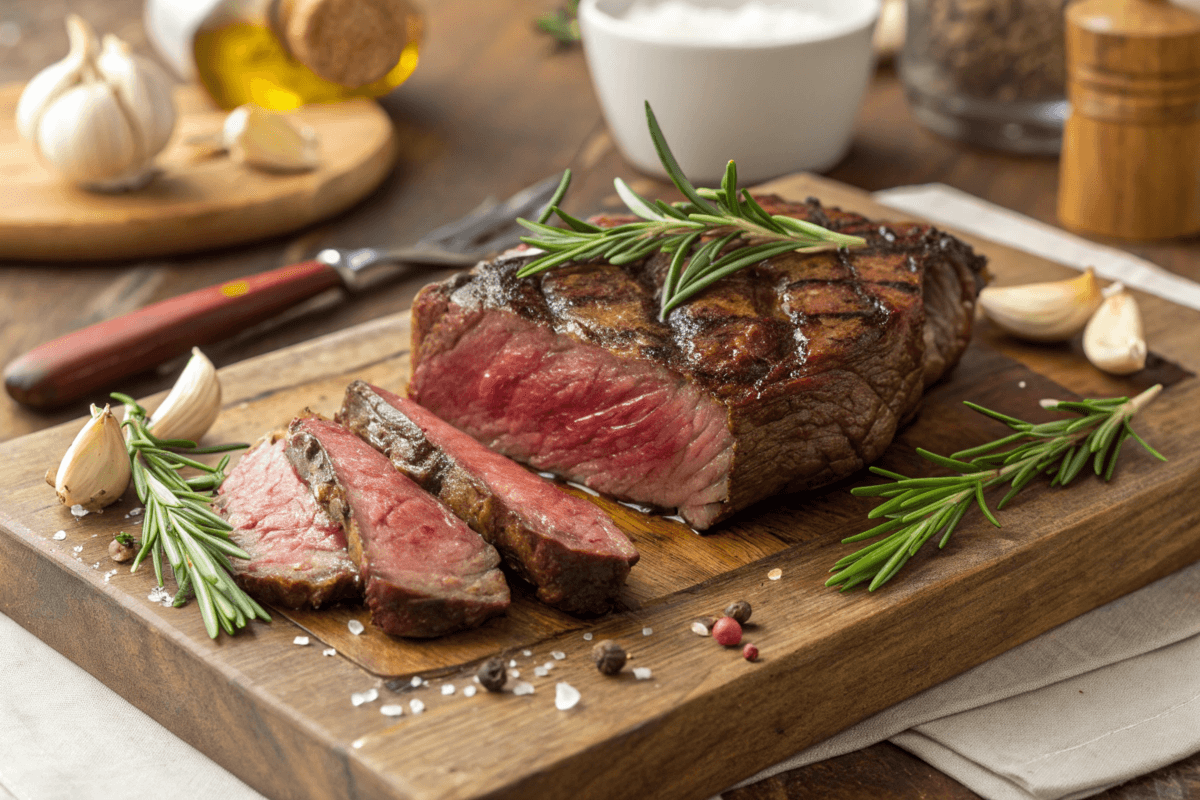Steak is one of those meals that tastes just as good—if not better—the next day. But preparing steak for next-day enjoyment requires a little extra care to ensure it stays tender, juicy, and flavorful. In this guide, we’ll explore the best methods for cooking steak so it’s perfect for reheating, proper storage techniques, and the most effective ways to reheat without losing its original quality. We’ll also share tips, common mistakes to avoid, and even a few creative leftover recipes. Let’s dive in and uncover how to cook steak to eat the next day while keeping every bite delicious!
Introduction to Cooking Steak for Next-Day Enjoyment
Why Cook Steak for the Next Day?
Cooking steak for next-day meals has its perks. Whether you’re meal prepping for a busy schedule or savoring the leftovers from a special dinner, steak can be just as delightful when reheated properly. Unlike other proteins that tend to dry out, steak, when prepared the right way, retains its juiciness and flavor.
For those who love a tender, flavorful steak but don’t have time to cook daily, preparing it ahead offers the convenience of a quick, satisfying meal. Plus, having steak ready in your fridge means you can whip up salads, wraps, or even hearty bowls in minutes.
Benefits of Planning Your Steak Meal Ahead
When you plan your steak meal in advance, you save time and reduce waste. By cooking steak with the intention of enjoying it the next day, you can focus on techniques that preserve its texture and taste. Meal prep enthusiasts love steak because it stays versatile—you can pair it with nearly any side dish or seasoning. Moreover, pre-cooked steak is perfect for quick reheating, ensuring you don’t compromise on quality even on your busiest days.
So, if you’ve ever wondered how to cook steak to eat the next day, this guide will answer all your questions and help you master the art of cooking and storing steak for future enjoyment!
Best Methods for Cooking Steak to Retain Freshness
Sous Vide Cooking for Steak
Sous vide is one of the best methods to ensure your steak stays tender and flavorful, even the next day. This low-and-slow technique involves sealing the steak in a vacuum bag and immersing it in a water bath at a controlled temperature. By cooking the steak evenly, sous vide prevents overcooking and locks in the steak’s natural juices.
Once cooked, you can sear the steak quickly on a hot skillet to give it that delicious, caramelized crust. If you’re wondering how to cook steak to eat the next day, sous vide offers an unbeatable combination of precision and taste.
Reverse-Searing Method for Even Cooking
The reverse-searing method is another excellent approach for next-day steak. This process starts with slow-roasting the steak in the oven at a low temperature until it’s nearly cooked. Afterward, the steak is finished with a quick, high-heat sear in a pan or on the grill.
Reverse searing ensures the steak cooks evenly throughout, which helps it retain its quality during reheating. Plus, it enhances the steak’s texture, making it ideal for meals planned in advance.
If you want more tips on ensuring your steak remains tender after reheating, check out how to make leftover steak tender.
Proper Storage Techniques to Keep Steak Fresh
Cooling and Wrapping Steak Before Storing
Properly cooling and wrapping your steak is essential to maintaining its freshness for the next day. After cooking, let the steak cool at room temperature for 20–30 minutes. Avoid placing hot steak directly in the fridge, as this can create condensation and compromise its texture.
Once cooled, wrap the steak tightly in aluminum foil or plastic wrap to prevent air exposure, which can dry out the meat. Alternatively, place the steak in a vacuum-sealed bag to lock in its moisture and flavor.
Best Containers and Wraps for Preserving Steak
If you prefer using containers, opt for airtight options made of glass or BPA-free plastic. These containers help preserve the steak’s natural juices and prevent odors from the fridge from affecting its taste. For longer storage, you can even freeze the steak in a freezer-safe bag.
Remember, proper storage ensures your steak remains as fresh and delicious as it was when first cooked. This is crucial when mastering how to cook steak to eat the next day.
How to Reheat Steak Without Losing Flavor and Juiciness
Oven Reheating Technique
Reheating steak in the oven is a foolproof way to maintain its tenderness and flavor. Preheat your oven to 250°F and place the steak on a wire rack set over a baking sheet. This setup allows heat to circulate evenly around the steak, preventing any soggy spots.
Warm the steak for 20–30 minutes, depending on its thickness, until it reaches an internal temperature of 110–120°F. For extra juiciness, add a small bowl of water to the oven to create steam. After reheating, quickly sear the steak in a hot skillet to restore its crispy crust.
This method is particularly useful when exploring how to cook steak to eat the next day, as it keeps the meat tender while reheating.

Stovetop Reheating Tips
The stovetop method is quick and effective, especially if you’re short on time. Heat a non-stick skillet over medium heat, adding a splash of water or broth to prevent the steak from drying out. Place the steak in the pan and cover it with a lid to trap moisture.
Reheat for 2–3 minutes per side, flipping occasionally, until warmed through. To enhance the flavor, brush the steak with melted butter or olive oil before serving. This technique works wonders for reviving leftover steak without sacrificing taste or texture.
For more detailed steps, you can explore how to reheat steak.
Quick and Easy Recipes for Using Leftover Steak
Steak Sandwiches and Wraps
Leftover steak makes an excellent filling for sandwiches and wraps. Thinly slice the steak and layer it onto toasted bread or a soft tortilla. Add your favorite toppings, such as caramelized onions, fresh arugula, or a dollop of horseradish sauce.
For an extra burst of flavor, you can grill the sandwich or wrap in a panini press for a few minutes. This quick meal is perfect for busy days and ensures you enjoy your steak in a whole new way.

Adding Steak to Salads and Stir-Fries
For a lighter option, toss leftover steak into a fresh salad. Combine the steak with mixed greens, cherry tomatoes, and crumbled blue cheese, then drizzle with balsamic vinaigrette. The steak adds protein and transforms an ordinary salad into a satisfying meal.
Alternatively, slice the steak into strips and stir-fry it with colorful veggies like bell peppers, snap peas, and mushrooms. Season with soy sauce, garlic, and a touch of sesame oil for a savory dish that’s ready in minutes.
For more creative ways to use leftover steak, check out our recipe ideas on the site.
Common Mistakes to Avoid When Cooking Steak for Later
Overcooking the Steak Initially
One of the biggest mistakes when learning how to cook steak to eat the next day is overcooking it during the initial preparation. Overcooked steak tends to dry out quickly when reheated, losing both its flavor and texture. To avoid this, aim to cook the steak slightly under your desired doneness. For example, if you prefer medium-rare, remove the steak from heat when it’s rare. This way, the steak finishes cooking when reheated, ensuring it stays juicy and tender.
Improper Storage Practices
Another common error is failing to store steak properly. Leaving the steak uncovered in the fridge can cause it to dry out, while wrapping it too tightly before it cools can trap moisture and make the steak soggy. Always allow the steak to cool at room temperature before wrapping it in foil or placing it in an airtight container. Additionally, label the container with the date to ensure you consume the steak within 3–4 days for optimal freshness.
Avoiding these pitfalls will help you enjoy your steak as if it were freshly cooked, even when prepared in advance.
Tips to Enhance the Flavor of Reheated Steak
Adding Fresh Herbs and Seasonings
Reheating steak is the perfect opportunity to elevate its flavor by adding fresh herbs and seasonings. Sprinkle some chopped rosemary, thyme, or parsley over the steak before reheating to infuse it with a fresh, aromatic kick. You can also use garlic powder or a light dusting of smoked paprika to enhance its natural richness. These simple additions make reheated steak feel like a gourmet meal.
Using Flavored Butters and Sauces
To take your reheated steak to the next level, serve it with a dollop of flavored butter or a drizzle of your favorite sauce. Garlic butter, herb-infused butter, or even a tangy chimichurri sauce can add depth and moisture, making each bite more enjoyable. For a classic twist, consider pairing your steak with a rich mushroom or peppercorn sauce.
By following these tips, you can transform reheated steak into a flavorful, satisfying dish that’s just as enjoyable as when it was freshly cooked. If you’re curious about more ways to enhance your steak, try experimenting with different seasoning blends or sauces for endless possibilities!
Frequently Asked Questions (FAQs)
Can I Eat Steak Cold the Next Day?
Yes, you can eat steak cold the next day, and it can be surprisingly delicious! Cold steak is perfect for salads, sandwiches, or wraps. To enhance its flavor, slice it thin and pair it with bold dressings or spreads like horseradish sauce. However, make sure the steak was stored properly in an airtight container and consumed within 3–4 days to ensure safety. If you’re still wondering how to cook steak to eat the next day while keeping its taste intact, cold preparations are a great option.
What Is the Best Way to Reheat Medium-Rare Steak?
To reheat medium-rare steak without overcooking, the oven or sous vide method works best. Both techniques use gentle heat to warm the steak without ruining its delicate texture. Set your oven to 250°F, place the steak on a wire rack, and reheat until it reaches an internal temperature of 110–120°F. This keeps the steak’s center perfectly pink and juicy, just as it should be.
Is It Safe to Cook Steak Rare for Next-Day Consumption?
Yes, cooking steak rare for next-day use is safe as long as proper storage and reheating practices are followed. Be sure to refrigerate the steak within two hours of cooking and reheat it to an internal temperature of at least 130°F to maintain safety while retaining the rare texture.
How Long Can Cooked Steak Be Stored in the Fridge?
Cooked steak can be safely stored in the fridge for 3–4 days if kept in an airtight container. For longer storage, consider freezing the steak in a freezer-safe bag. Always label and date the container to keep track of freshness and avoid consuming steak that’s past its prime.
Final Thoughts on Cooking Steak for Next-Day Enjoyment
Cooking steak with the next day in mind can be both practical and rewarding. Whether you prefer your steak reheated or enjoyed cold, the right preparation and storage techniques ensure it stays tender and flavorful. By following the tips in this guide, you’ll master how to cook steak to eat the next day without sacrificing quality.
From sous vide to reverse searing, there are many ways to prepare steak that reheats beautifully. Proper storage, thoughtful reheating, and a few flavor-enhancing tricks will help you transform your leftovers into gourmet meals. So, the next time you cook steak, plan ahead and enjoy it to the fullest, even the next day!

